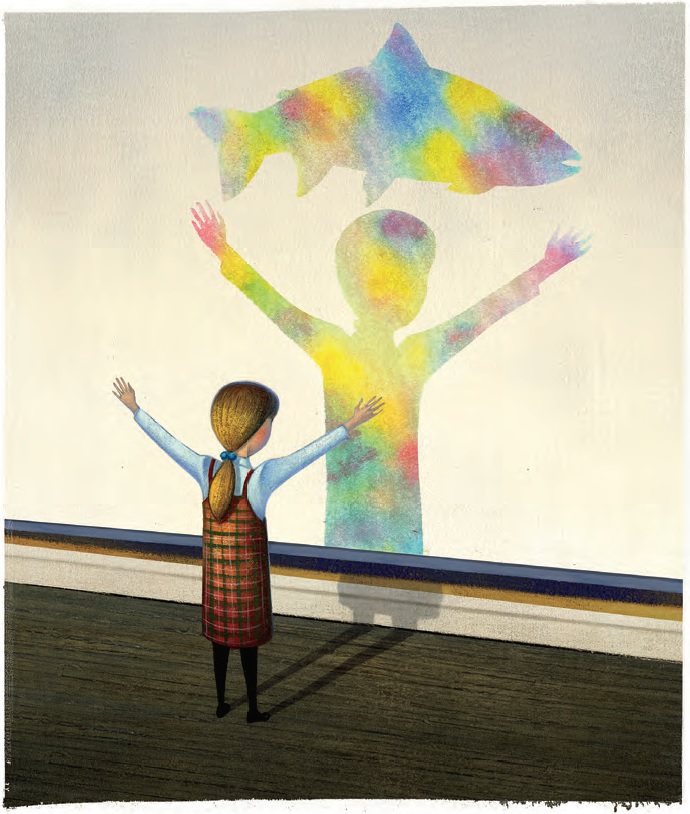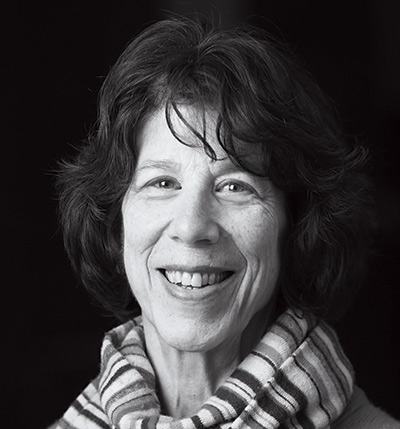
Illustration: Jon Krause
In February, the sound of two black holes colliding billions of light years away confirmed Einstein’s theory of gravitational waves linking time and distance.
It also underscored what Barbara Tversky has long asserted: that “our ability to use spatial thinking to understand complex abstract concepts separates us from other species.”
“I’m fond of language — I use it all the time — but we think in other ways, too,” says Tversky, TC Professor of Psychology & Education, and Stanford University professor emerita. “We live our lives in space, we navigate space, we know firsthand about distance and direction and we use our bodies and space to understand, reason, communicate and create.”
Language is a product of spatial and visual thinking, Tversky argues. In individuals’ development and that of our species, gesturing precedes speaking: pointing, connecting things with lines drawn in the air, or showing the size of the proverbial big fish by spreading the arms wide.

We live all our lives in space, we navigate space, and we use our bodies and space to understand, reason, communicate and create.”
— Barbara Tversky, Professor of Psychology & Education
Both physical gestures and (in Tversky’s parlance) “frozen” ones — sketches, maps, diagrams — express meanings more directly than words, which have arbitrary relations to meaning. “Upwards, in gesture or diagram, is readily produced and understood, even by preschoolers, to indicate more, better and stronger,” Tversky says. “Going up requires overcoming gravity and overcoming gravity takes health, strength, wealth. By expressing meanings more directly, both forms of spatial communication — gestures and diagrams — foster thought and creativity.”
Spatial thinking enables leaps in understanding that, quite literally, are beyond words. Tversky and her former postdoctoral student Masaki Suwa have documented the “conversations” architects have with their own sketches, through which, by keeping drawings ambiguous and repeatedly reconfiguring them, they continually discover new possibilities. Another former student, Andrea Kantrowitz (Ed.D. ’14), similarly documented artists’ “conversations” with their initial renderings. Gestures integrated with explanations can change thought. Work by Azadeh Jamalian (Ph.D. ’14) shows that gestures help students understand subtle temporal concepts such as cyclicity and simultaneity. And gesturing can support memory and thinking. Tversky, Jamalian, postdoc Valeria Giardino and students Melissa Bradley and Yang Liu have shown that when students study complex descriptions of space or STEM systems, most model the spaces or the systems through spontaneous hand gestures. They then perform better on tests of memory and inference. Similarly, in her dissertation with Tversky, Eliza Bobek (Ph.D. ’12) showed that creating visual explanations of STEM phenomena benefits learning more than creating typical verbal explanations.
The takeaway? “We need to better understand how the human mind learns and thinks spatially and how we can improve that thinking,” says Tversky, who was elected to the American Academy of Arts and Sciences in 2013. “We need to teach spatial reasoning — how to create and understand diagrams and maps and how to make inferences from them, how to think about spatial transformations.” She herself teaches two such courses, Spatial Cognition and Visual Communication. But the focus on spatial thinking should begin with young children, she says, and should be as fundamental as arithmetic and writing.
Otherwise, that proverbial big fish will get away.